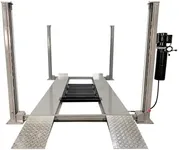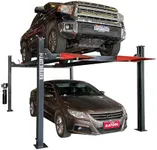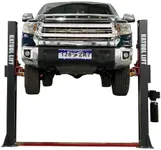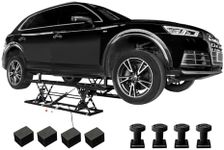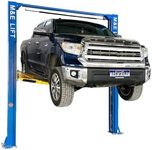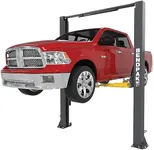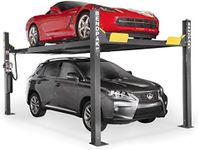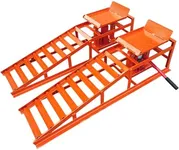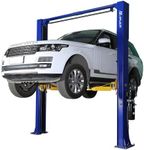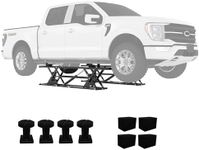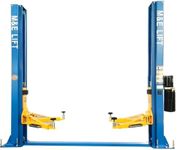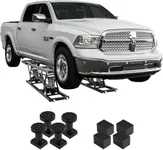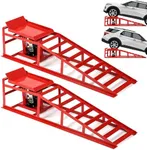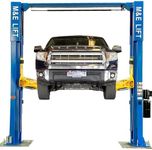Buying Guide for the Best Car Lifts For Home Garages
Choosing the right car lift for your home garage can significantly enhance your vehicle maintenance experience. A car lift allows you to easily access the underside of your vehicle, making tasks like oil changes, tire rotations, and brake repairs much simpler. When selecting a car lift, it's important to consider several key specifications to ensure you get the best fit for your needs. Understanding these specs will help you make an informed decision and choose a lift that is safe, reliable, and suitable for your garage space and vehicle type.Lift CapacityLift capacity refers to the maximum weight a car lift can safely handle. This spec is crucial because using a lift with insufficient capacity can be dangerous. Lift capacities are typically measured in pounds or tons. For example, a 2-post lift might have a capacity of 9,000 pounds, while a 4-post lift could handle up to 14,000 pounds. To choose the right capacity, consider the heaviest vehicle you plan to lift. Ensure the lift's capacity exceeds this weight to maintain safety and functionality.
Lift TypeThere are several types of car lifts, including 2-post lifts, 4-post lifts, scissor lifts, and portable lifts. Each type has its own advantages and is suited for different tasks. 2-post lifts are great for general maintenance and take up less space, while 4-post lifts offer more stability and are ideal for long-term storage. Scissor lifts are compact and portable lifts are easy to move around. Choose a lift type based on your specific needs, garage space, and the kind of work you plan to do.
Lift HeightLift height is the maximum height to which the lift can raise your vehicle. This spec is important for ensuring you have enough clearance to work comfortably underneath the car. Lift heights can vary significantly, from low-rise lifts that raise the vehicle a few feet off the ground to high-rise lifts that can lift a car up to six feet or more. Consider the height of your garage ceiling and the type of work you will be doing. If you need to stand under the vehicle, a higher lift height is preferable.
Lift FootprintThe lift footprint is the amount of floor space the lift occupies. This is an important consideration for home garages where space may be limited. The footprint includes the base dimensions and any additional space required for operation. Measure your garage space and compare it to the lift's footprint to ensure it will fit comfortably. If space is tight, consider a lift with a smaller footprint or a portable option that can be stored when not in use.
Power RequirementsCar lifts can be powered by different sources, typically electric or hydraulic systems. The power requirements will depend on the type of lift and its capacity. Electric lifts usually require a 110V or 220V power source, while hydraulic lifts may need a dedicated hydraulic pump. Check your garage's power supply and ensure it matches the lift's requirements. If necessary, consult an electrician to install the appropriate outlets or circuits.
Safety FeaturesSafety features are critical for ensuring the safe operation of your car lift. Common safety features include automatic locking mechanisms, safety locks, and overload protection. These features prevent the lift from accidentally lowering or exceeding its weight capacity. When choosing a lift, look for models with robust safety features to protect yourself and your vehicle. Read reviews and check for certifications from reputable safety organizations.
